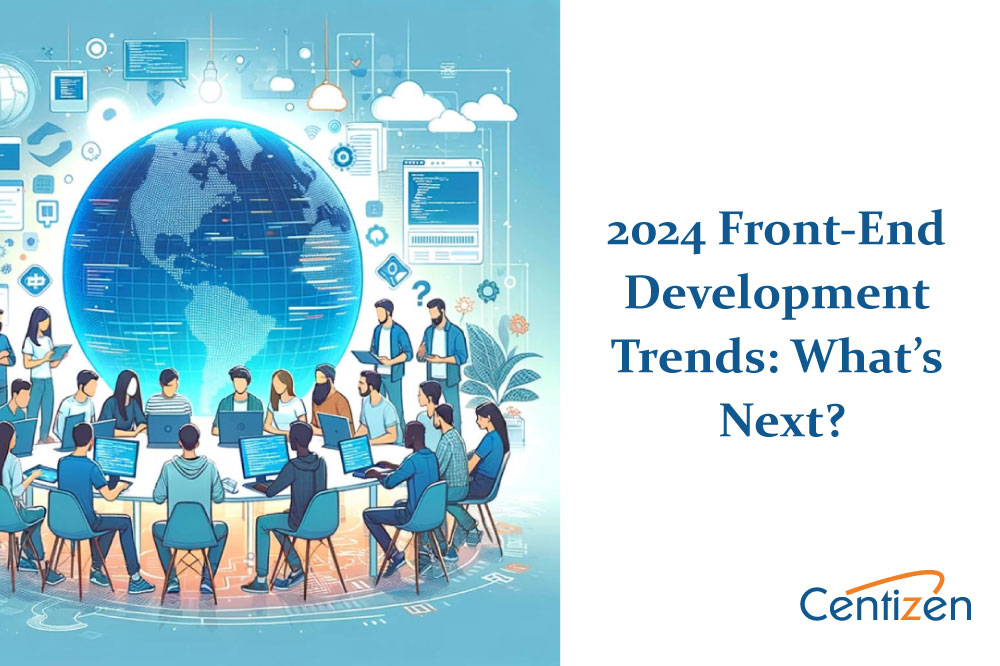The Future of Front-End Development: Trends to Watch in 2024

As we look forward to 2024, the front-end development landscape is evolving at a rapid pace, driven by new technologies, user expectations, and the relentless pursuit of better performance and user experience. This article synthesizes the most significant trends that are shaping the future of front-end development.
Embracing new frameworks and libraries
The front-end ecosystem continues to be dominated by established players such as React, Vue, and Angular. However, new frameworks like Svelte, Solid, Astro, and Qwik are making their mark, promising to reduce JavaScript size, enhance execution performance, and offer cleaner APIs for developers. Astro, in particular, has shown remarkable growth, signaling its potential to become a major framework alongside the likes of Next.js.
Progressive Web Apps (PWAs): The new standard
PWAs have transitioned from being a cutting-edge trend to a standard practice, offering offline functionality, app-like interactions, and secure connections. Their ability to provide consistent and engaging user experiences across devices makes them essential for businesses aiming to enhance user engagement.
The rise of Jamstack architecture
Jamstack architecture has become a standard approach in developing fast, scalable, and secure websites. By decoupling the front-end from the back-end, this architecture leverages static site generators and server-side rendering technologies to deliver superior performance and SEO benefits.
Voice user interactions gain momentum
With the growing adoption of smart assistants and voice search, voice user interfaces are becoming increasingly important for accessibility and convenience. They offer a hands-free way to interact with digital applications, making the web more accessible and engaging for a broader range of users.
Cybersecurity takes center stage
In the face of increasing online threats, cybersecurity is becoming a critical concern in front-end development. Techniques such as password less logins and secure authentication methods are on the rise, aiming to safeguard user data against potential breaches.
Motion UI: Captivating users with animations
The use of motion UI and micro-animations is becoming more prevalent, aiming to make web interfaces more dynamic and interactive. These animations significantly enhance user engagement and experience, making applications more captivating.
Micro Front-Ends: A flexible and scalable approach
The architectural style of micro front-ends, which breaks down applications into smaller, independent components, is facilitating more flexible and scalable development processes. This approach allows teams to work on discrete parts of an application simultaneously, improving efficiency and productivity.
Utility-First CSS on the rise
Frameworks like Tailwind CSS are promoting a utility-first approach to CSS, focusing on efficiency and reusability. This streamlined approach contributes to faster development cycles and more maintainable codebases.
Immersive experiences with AR, VR, and AI
Augmented Reality (AR), Virtual Reality (VR), and Artificial Intelligence (AI) are set to create more immersive and personalized web experiences. These technologies open new possibilities for user engagement, especially in sectors like eCommerce and education.
Optimizing performance with SSR and SSG
Technologies like Server-Side Rendering (SSR) and Static Site Generation (SSG) are evolving to offer better performance and faster loading times. Innovations in these areas are enhancing the efficiency of web applications, making them more responsive and user-friendly.
Edge computing: Enhancing performance and scalability
Edge computing is enabling more performant and scalable web applications by minimizing latency. This technology, combined with modern JavaScript tools, is revolutionizing the way web applications are developed and deployed.
TypeScript: Enhancing developer experience
TypeScript continues to be the preferred choice for adding static typing to JavaScript applications. Its ongoing development is making it increasingly robust, offering improved type-checking capabilities and a better developer experience.
The front-end development landscape in 2024 is vibrant with opportunities and challenges. Staying informed about these trends is crucial for developers and businesses alike as they strive to create engaging, secure, and high-performing web applications in an ever-evolving digital ecosystem.
Discover how Centizen Inc can transform your business with tailored staffing solutions and innovative software development, including next-generation platforms like ZenBasket and Zenyo, designed to elevate your eCommerce and workforce management to new heights.
Centizen
A Leading IT Staffing, Custom Software and SaaS Product Development company founded in 2003. We offer a wide range of scalable, innovative IT Staffing and Software Development Solutions.
Contact Us
USA: +1 (971) 420-1700
Canada: +1 (971) 420-1700
India: +91 63807-80156
Email: contact@centizen.com
Our Services
Products
Contact Us
USA: +1 (971) 420-1700
Canada: +1 (971) 420-1700
India: +91 63807-80156
Email: contact@centizen.com






